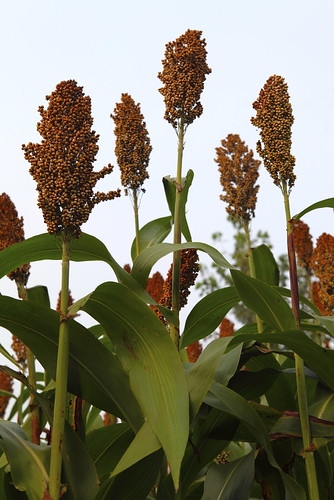
This post is part of the Science Tuesday feature series on the USDA blog. Check back each week as we showcase stories and news from USDA’s rich science and research portfolio.
Liquid fuel, charcoal, and electric power are all possible byproducts of biomass feedstocks. But what if there was a feedstock that not only produced bioenergy, but acted as a greenhouse gas “sink” as well? According to Texas A&M’s AgriLife Research, there is: bioenergy sorghum.
Each region contains locally generated biomass feedstocks, ranging from grains to animal byproducts. Sorghum is a group of grasses with about 30 species, which can be used in a variety of bioenergy production processes, like starch-to-ethanol, sugar-to-ethanol, and plants-to-bioenergy.
Researchers from the university’s soil and crop sciences department made this discovery while measuring greenhouse gases from biofuel production lab experiments. The research helped quantify the carbon footprint of a bioenergy cropping system as part of the study, “Impacts of Biomass Sorghum Feedstock Production on Carbon Sequestration and Greenhouse Gas Emissions,” partially funded by the USDA’s National Institute of Food and Agriculture (NIFA). The project received an Agriculture and Food Research Initiative grant in 2012.
According to the study, sorghum may play a significant role in future biofuel production as a high quality source. However, no studies have measured life-cycle greenhouse gases from bioenergy sorghum.
Analyzing the effects of crop rotation, nitrogen fertilization, and residue management were the main objectives. Researchers collected soil samples when the study began in 2008 and each spring to analyze the soil carbon storage and nutrient availability.
Annual accrual rates of soil organic carbon were much higher than expected. While promising, researchers said these rates may be due to the carbon-depleted soil where the experiments were conducted; severe drought conditions in 2010 and 2011 may have resulted in greater carbon production to aid roots searching for water.
“These results have significant implications for net greenhouse gas emissions, soil organic carbon sequestration and life-cycle analyses,” said Dr. Frank Hons, professor of soil science and AgriLife Research Faculty Fellow. “Few studies have quantified greenhouse gas emissions and below-ground carbon inputs from bioenergy sorghum, and further investigation is warranted.”
Through federal funding and leadership for research, education, and extension programs, NIFA focuses on investing in science and solving critical issues impacting people's daily lives and the nation's future. For more information, visit www.nifa.usda.gov.
